
Plumose anemones and Bull Kelp on British Columbia marine reef, Browning Pass, Vancouver Island, Canada.
Species: Bull kelp, Plumose anemone, Metridium senile, Nereocystis luetkeana
Location: British Columbia, Canada
Image ID: 34349
Species: Bull kelp, Plumose anemone, Metridium senile, Nereocystis luetkeana
Location: British Columbia, Canada
Image ID: 34349

Plumose anemones and Bull Kelp on British Columbia marine reef, Browning Pass, Vancouver Island, Canada.
Species: Bull kelp, Plumose anemone, Metridium senile, Nereocystis luetkeana
Location: British Columbia, Canada
Image ID: 34352
Species: Bull kelp, Plumose anemone, Metridium senile, Nereocystis luetkeana
Location: British Columbia, Canada
Image ID: 34352

Anemones cling to Bull Kelp Stalk, Browning Pass, British Columbia.
Species: Bull kelp, Nereocystis luetkeana
Location: British Columbia, Canada
Image ID: 34357
Species: Bull kelp, Nereocystis luetkeana
Location: British Columbia, Canada
Image ID: 34357
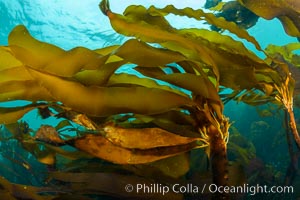
Bull kelp forest near Vancouver Island and Queen Charlotte Strait, Browning Pass, Canada.
Species: Bull kelp, Nereocystis luetkeana
Location: British Columbia, Canada
Image ID: 34371
Species: Bull kelp, Nereocystis luetkeana
Location: British Columbia, Canada
Image ID: 34371

Plumose anemones and Bull Kelp on British Columbia marine reef, Browning Pass, Vancouver Island, Canada.
Species: Bull kelp, Plumose anemone, Metridium senile, Nereocystis luetkeana
Location: British Columbia, Canada
Image ID: 34384
Species: Bull kelp, Plumose anemone, Metridium senile, Nereocystis luetkeana
Location: British Columbia, Canada
Image ID: 34384
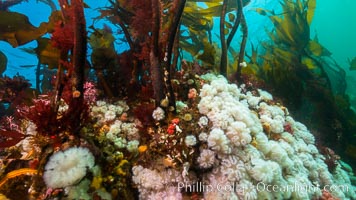
Plumose anemones and Bull Kelp on British Columbia marine reef, Browning Pass, Vancouver Island, Canada.
Species: Bull kelp, Plumose anemone, Metridium senile, Nereocystis luetkeana
Location: British Columbia, Canada
Image ID: 34385
Species: Bull kelp, Plumose anemone, Metridium senile, Nereocystis luetkeana
Location: British Columbia, Canada
Image ID: 34385

Plumose anemones and Bull Kelp on British Columbia marine reef, Browning Pass, Vancouver Island, Canada.
Species: Bull kelp, Plumose anemone, Metridium senile, Nereocystis luetkeana
Location: British Columbia, Canada
Image ID: 34386
Species: Bull kelp, Plumose anemone, Metridium senile, Nereocystis luetkeana
Location: British Columbia, Canada
Image ID: 34386

Plumose anemones and Bull Kelp on British Columbia marine reef, Browning Pass, Vancouver Island, Canada.
Species: Bull kelp, Plumose anemone, Metridium senile, Nereocystis luetkeana
Location: British Columbia, Canada
Image ID: 34390
Species: Bull kelp, Plumose anemone, Metridium senile, Nereocystis luetkeana
Location: British Columbia, Canada
Image ID: 34390

Bull kelp forest near Vancouver Island and Queen Charlotte Strait, anemones cling to the kelp stalks, Browning Pass, Canada.
Species: Bull kelp, Plumose anemone, Metridium senile, Nereocystis luetkeana
Location: British Columbia, Canada
Image ID: 34394
Species: Bull kelp, Plumose anemone, Metridium senile, Nereocystis luetkeana
Location: British Columbia, Canada
Image ID: 34394

Plumose anemones cover the ocean reef, Browning Pass, Vancouver Island, Canada.
Species: Bull kelp, Plumose anemone, Metridium senile, Nereocystis luetkeana
Location: British Columbia, Canada
Image ID: 34395
Species: Bull kelp, Plumose anemone, Metridium senile, Nereocystis luetkeana
Location: British Columbia, Canada
Image ID: 34395

Southern elephant seal, adult male, Mirounga leonina, Valdes Peninsula, Argentina.
Species: Southern elephant seal, Mirounga leonina
Location: Puerto Piramides, Chubut, Argentina
Image ID: 38413
Species: Southern elephant seal, Mirounga leonina
Location: Puerto Piramides, Chubut, Argentina
Image ID: 38413

Bull elk, antlers bearing velvet, Gibbon Meadow. Elk are the most abundant large mammal found in Yellowstone National Park. More than 30,000 elk from 8 different herds summer in Yellowstone and approximately 15,000 to 22,000 winter in the park. Bulls grow antlers annually from the time they are nearly one year old. When mature, a bulls rack may have 6 to 8 points or tines on each side and weigh more than 30 pounds. The antlers are shed in March or April and begin regrowing in May, when the bony growth is nourished by blood vessels and covered by furry-looking velvet.
Species: Elk, Cervus canadensis
Location: Gibbon Meadows, Yellowstone National Park, Wyoming
Image ID: 13154
Species: Elk, Cervus canadensis
Location: Gibbon Meadows, Yellowstone National Park, Wyoming
Image ID: 13154
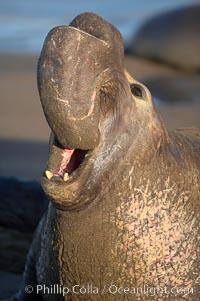
Bull elephant seal, adult male, bellowing. Its huge proboscis is characteristic of male elephant seals. Scarring from combat with other males. Central California.
Species: Elephant seal, Mirounga angustirostris
Location: Piedras Blancas, San Simeon, California
Image ID: 15387
Species: Elephant seal, Mirounga angustirostris
Location: Piedras Blancas, San Simeon, California
Image ID: 15387

This bull elephant seal, an old adult male, shows extreme scarring on his chest and proboscis from many winters fighting other males for territory and rights to a harem of females. Sandy beach rookery, winter, Central California.
Species: Elephant seal, Mirounga angustirostris
Location: Piedras Blancas, San Simeon, California
Image ID: 15388
Species: Elephant seal, Mirounga angustirostris
Location: Piedras Blancas, San Simeon, California
Image ID: 15388
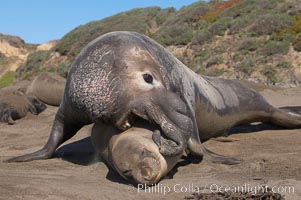
A bull elephant seal forceably mates (copulates) with a much smaller female, often biting her into submission and using his weight to keep her from fleeing. Males may up to 5000 lbs, triple the size of females. Sandy beach rookery, winter, Central California.
Species: Elephant seal, Mirounga angustirostris
Location: Piedras Blancas, San Simeon, California
Image ID: 15408
Species: Elephant seal, Mirounga angustirostris
Location: Piedras Blancas, San Simeon, California
Image ID: 15408

A bull sea lion shows a brand burned into its hide by the Oregon Department of Fish and Wildlife, to monitor it from season to season as it travels between California, Oregon and Washington. Some California sea lions, such as this one C-704, prey upon migrating salmon that gather in the downstream waters and fish ladders of Bonneville Dam on the Columbia River. The "C" in its brand denotes Columbia River. These sea lions also form bachelor colonies that haul out on public docks in Astoria's East Mooring Basin and elsewhere, where they can damage or even sink docks.
Species: California sea lion, Zalophus californianus
Location: Columbia River, Astoria, Oregon
Image ID: 19419
Species: California sea lion, Zalophus californianus
Location: Columbia River, Astoria, Oregon
Image ID: 19419

Bull elk in sage brush with large rack of antlers during the fall rut (mating season). This bull elk has sparred with other bulls to establish his harem of females with which he hopes to mate.
Species: Elk, Cervus canadensis
Location: Mammoth Hot Springs, Yellowstone National Park, Wyoming
Image ID: 19702
Species: Elk, Cervus canadensis
Location: Mammoth Hot Springs, Yellowstone National Park, Wyoming
Image ID: 19702

Male elephant seals (bulls) rear up on their foreflippers and fight in the surf for access for mating females that are in estrous. Such fighting among elephant seals can take place on the beach or in the water. They bite and tear at each other on the neck and shoulders, drawing blood and creating scars on the tough hides.
Species: Elephant seal, Mirounga angustirostris
Location: Piedras Blancas, San Simeon, California
Image ID: 20370
Species: Elephant seal, Mirounga angustirostris
Location: Piedras Blancas, San Simeon, California
Image ID: 20370
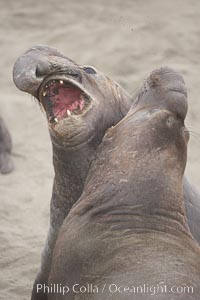
Male elephant seals (bulls) rear up on their foreflippers and fight for territory and harems of females. Bull elephant seals will haul out and fight from December through March, nearly fasting the entire time as they maintain their territory and harem. They bite and tear at each other on the neck and shoulders, drawing blood and creating scars on the tough hides.
Species: Elephant seal, Mirounga angustirostris
Location: Piedras Blancas, San Simeon, California
Image ID: 20371
Species: Elephant seal, Mirounga angustirostris
Location: Piedras Blancas, San Simeon, California
Image ID: 20371

A male moose, bull moose, on snow covered field, near Cooke City.
Species: Moose, Alces alces
Location: Yellowstone National Park, Wyoming
Image ID: 19681
Species: Moose, Alces alces
Location: Yellowstone National Park, Wyoming
Image ID: 19681

A male moose, bull moose, on snow covered field, near Cooke City.
Species: Moose, Alces alces
Location: Yellowstone National Park, Wyoming
Image ID: 19682
Species: Moose, Alces alces
Location: Yellowstone National Park, Wyoming
Image ID: 19682
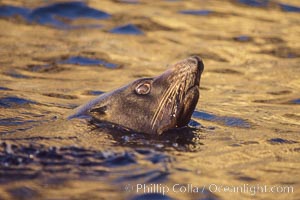
Guadalupe fur seal bull.
Species: Guadalupe fur seal, Arctocephalus townsendi
Location: Guadalupe Island (Isla Guadalupe), Baja California, Mexico
Image ID: 02356
Species: Guadalupe fur seal, Arctocephalus townsendi
Location: Guadalupe Island (Isla Guadalupe), Baja California, Mexico
Image ID: 02356

Bull shark.
Species: Bull shark, Carcharhinus leucas
Location: Great Isaac Island, Bahamas
Image ID: 12717
Species: Bull shark, Carcharhinus leucas
Location: Great Isaac Island, Bahamas
Image ID: 12717
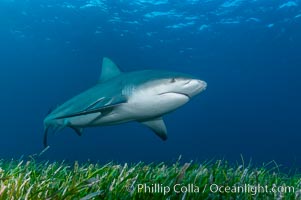
Bull shark.
Species: Bull shark, Carcharhinus leucas
Location: Great Isaac Island, Bahamas
Image ID: 12718
Species: Bull shark, Carcharhinus leucas
Location: Great Isaac Island, Bahamas
Image ID: 12718

Bull shark.
Species: Bull shark, Carcharhinus leucas
Location: Great Isaac Island, Bahamas
Image ID: 12723
Species: Bull shark, Carcharhinus leucas
Location: Great Isaac Island, Bahamas
Image ID: 12723

Common Bullseye, Pempheris multiradiata, on the wreck of the Portland Maru, Kangaroo Island, South Australia. The Portland Maru was a 117-meter Japanese cargo ship which struck a submerged object and was beached near Cape Borda, Kangaroo Island, on March 19, 1935.
Species: Common Bullseye, Pempheris multiradiata
Location: Wreck of the Portland Maru, Kangaroo Island, South Australia
Image ID: 39231
Species: Common Bullseye, Pempheris multiradiata
Location: Wreck of the Portland Maru, Kangaroo Island, South Australia
Image ID: 39231

Bull elephant seal, adult male, bellowing. Its huge proboscis is characteristic of male elephant seals. Scarring from combat with other males.
Species: Elephant seal, Mirounga angustirostris
Location: Piedras Blancas, San Simeon, California
Image ID: 35152
Species: Elephant seal, Mirounga angustirostris
Location: Piedras Blancas, San Simeon, California
Image ID: 35152

A bull elephant seal (adult male) surveys the beach. The huge proboscis is characteristic of the species. Scarring from combat with other males. Central California.
Species: Elephant seal, Mirounga angustirostris
Location: Piedras Blancas, San Simeon, California
Image ID: 15460
Species: Elephant seal, Mirounga angustirostris
Location: Piedras Blancas, San Simeon, California
Image ID: 15460
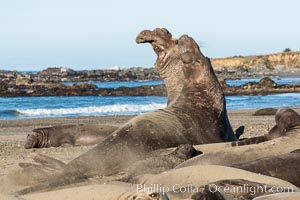
Male elephant seals (bulls) rear up on their foreflippers and fight for territory and harems of females. Bull elephant seals will haul out and fight from December through March, nearly fasting the entire time as they maintain their territory and harem. They bite and tear at each other on the neck and shoulders, drawing blood and creating scars on the tough hides. Sandy beach rookery, winter, Central California.
Species: Elephant seal, Mirounga angustirostris
Location: Piedras Blancas, San Simeon, California
Image ID: 35135
Species: Elephant seal, Mirounga angustirostris
Location: Piedras Blancas, San Simeon, California
Image ID: 35135

Bullseye torpedo electric ray, Sea of Cortez, Baja California, Mexico.
Species: Bullseye torpedo electric ray, Diplobatis ommata
Location: Sea of Cortez, Baja California, Mexico
Image ID: 27543
Species: Bullseye torpedo electric ray, Diplobatis ommata
Location: Sea of Cortez, Baja California, Mexico
Image ID: 27543